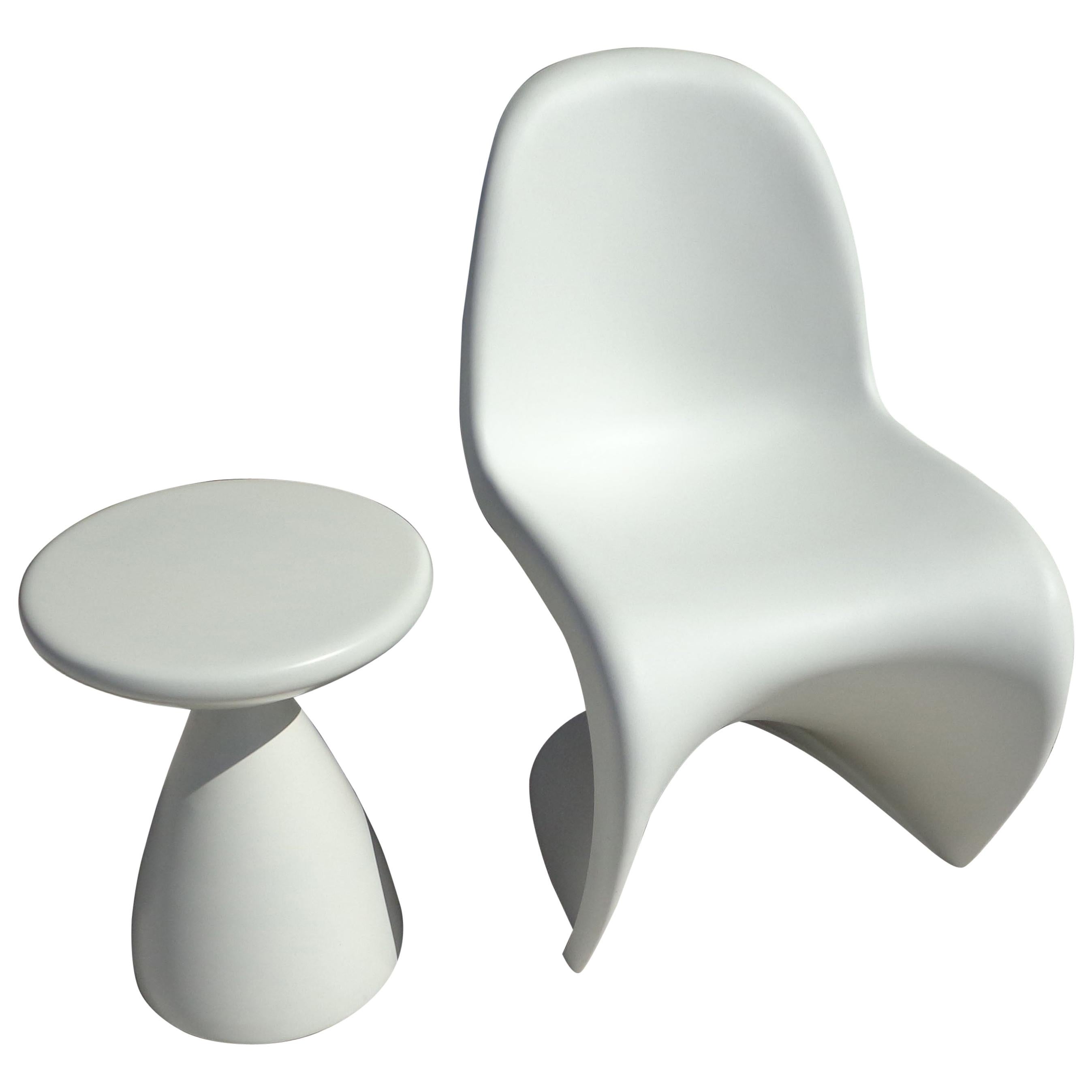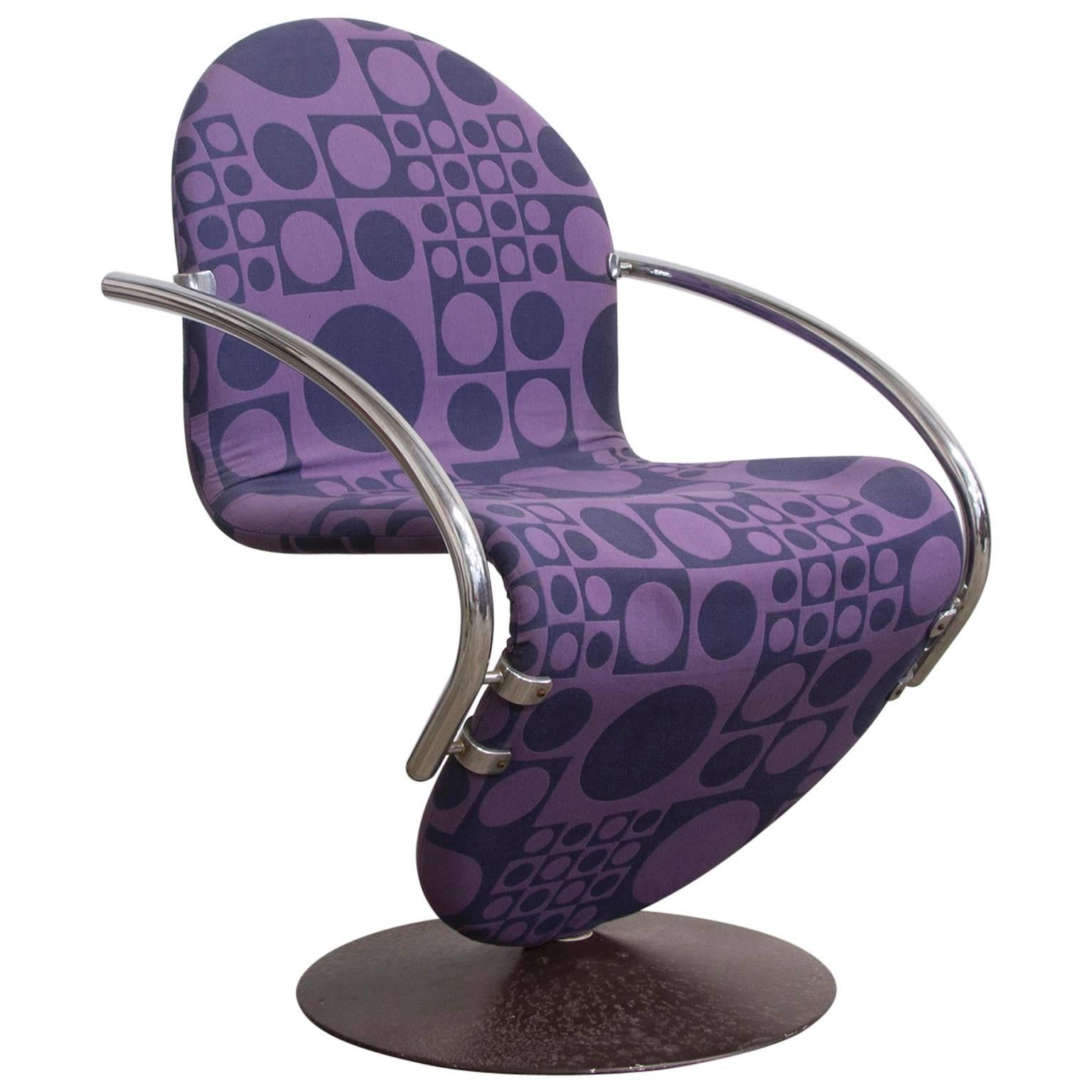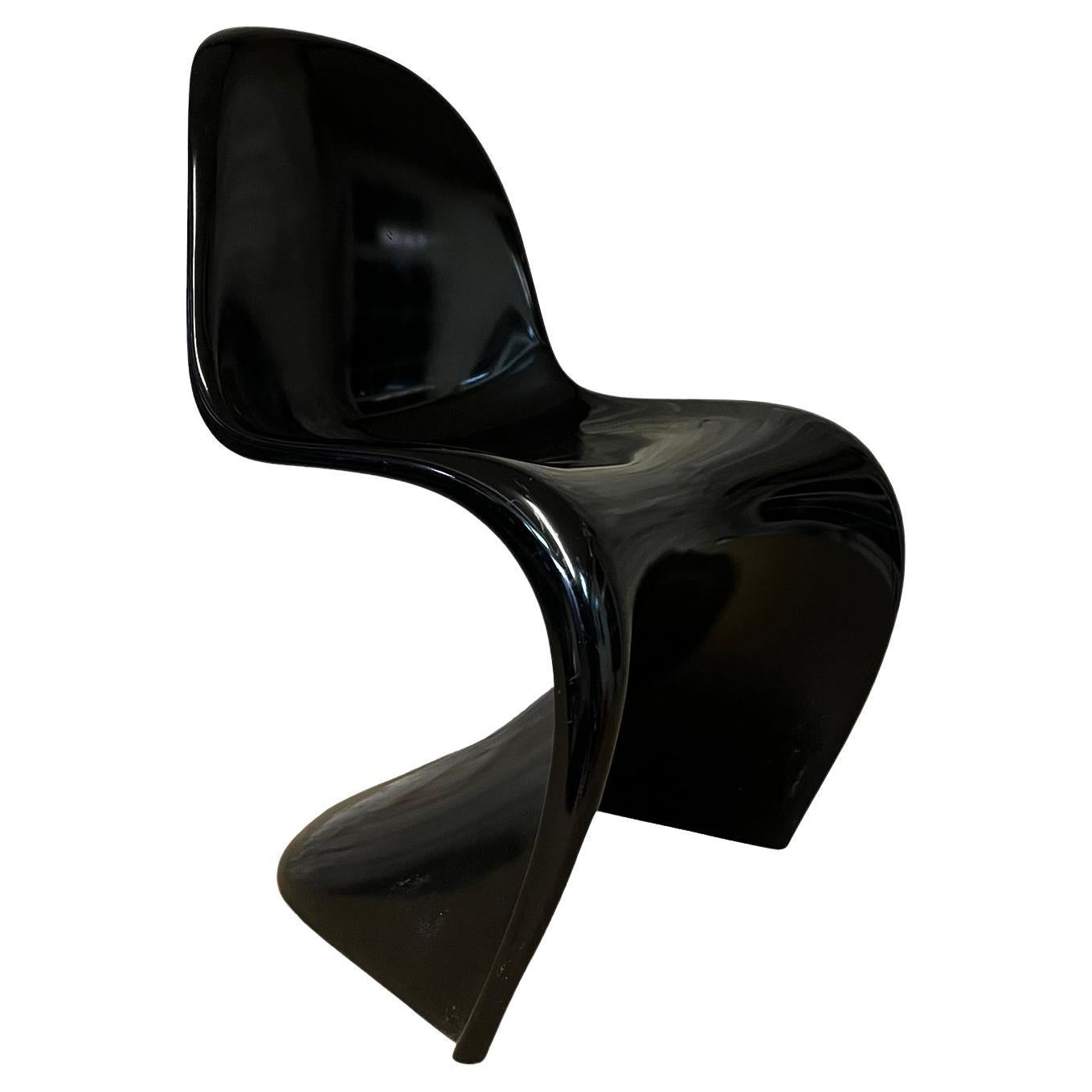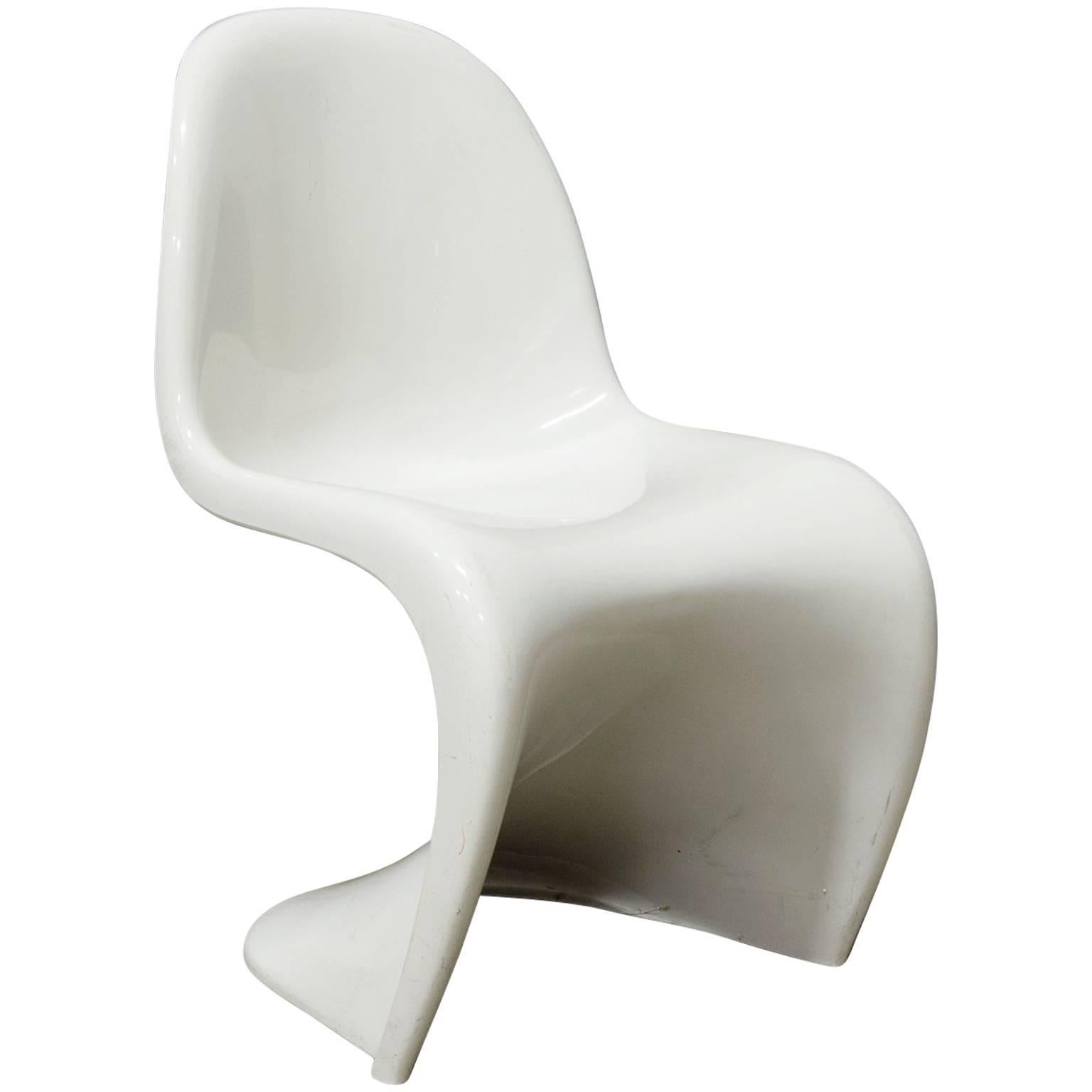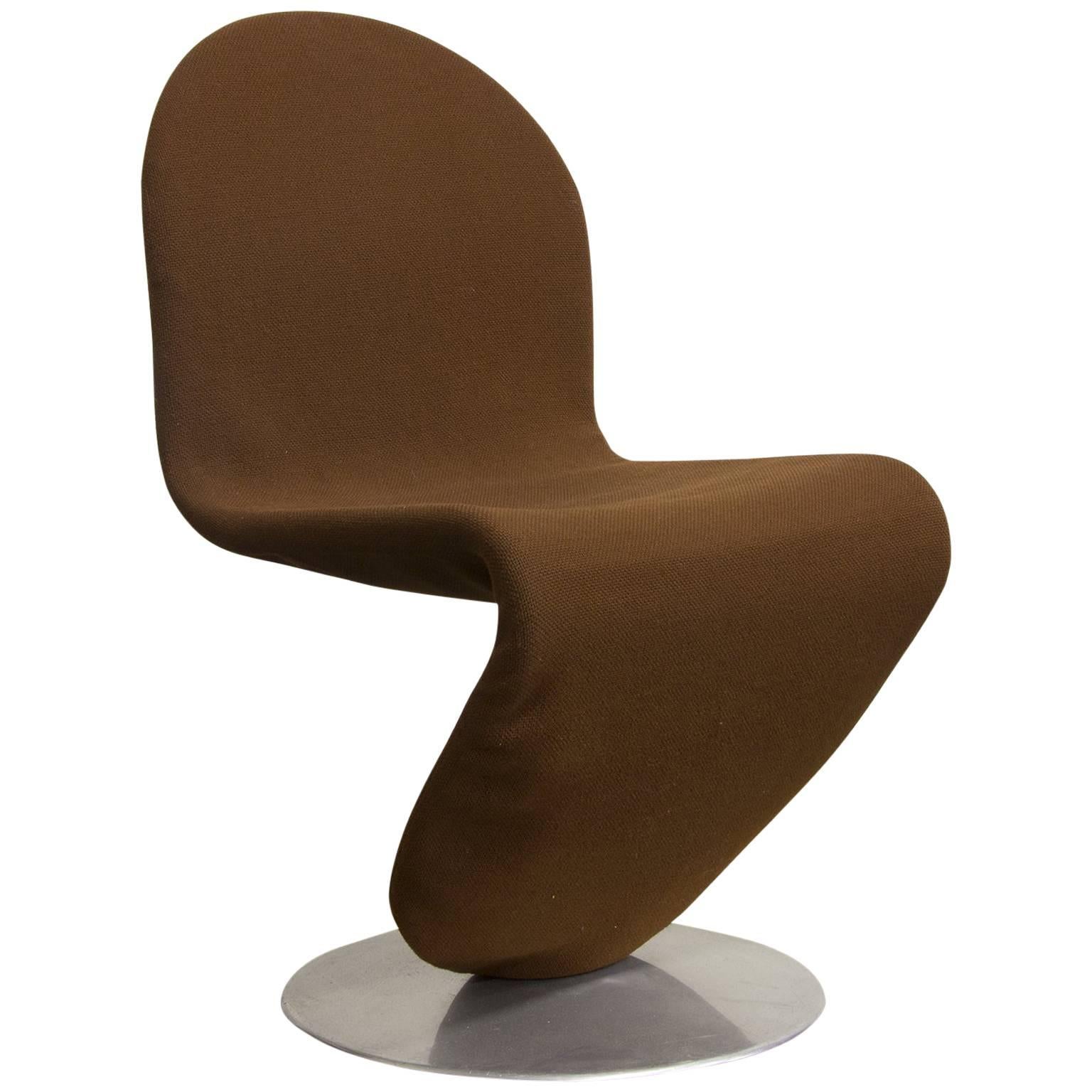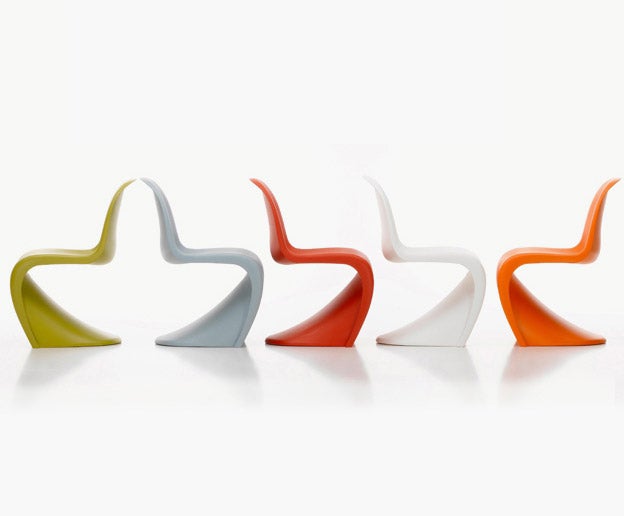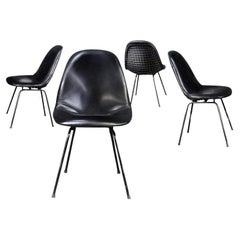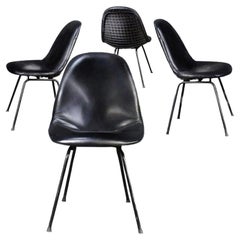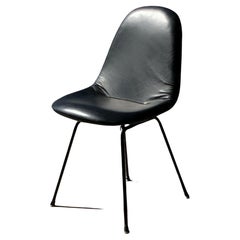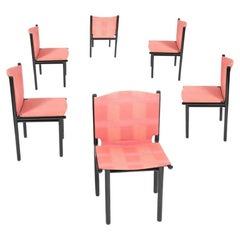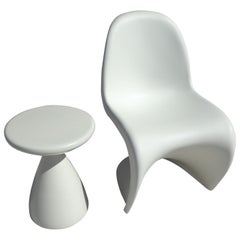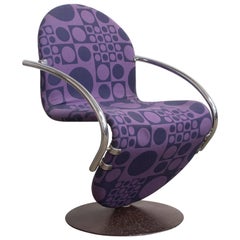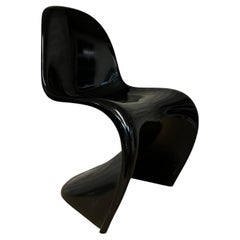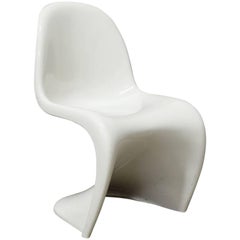Verner Panton for Vitra Glow Panton Chair, Luminescent, White, Blue, Limited Ed
About the Item
- Creator:Verner Panton (Designer),Vitra (Maker)
- Design:
- Dimensions:Height: 35 in (88.9 cm)Width: 20 in (50.8 cm)Depth: 23 in (58.42 cm)Seat Height: 16.5 in (41.91 cm)
- Style:Mid-Century Modern (Of the Period)
- Materials and Techniques:
- Place of Origin:
- Period:
- Date of Manufacture:2018
- Condition:Wear consistent with age and use. Good vintage condition. 2 chairs in excellent vintage condition. 1 chair in very good vintage condition. (See image with black arrows) 1 chair in fair vintage condition. (See image with blue arrows). Please inquire for more info.
- Seller Location:Brooklyn, NY
- Reference Number:1stDibs: LU4190321687992
Panton Chair
Appearing as if it were a three-dimensional brushstroke of paint, the S-shaped Panton chair is just one curved piece of plastic that cantilevers over itself to form a seat. Prior to its development by experimental Danish designer Verner Panton (1926–98), no chair had ever been crafted from a single piece of molded plastic.
“I want to design furniture that grows up out of the floor,” Panton said of his work. “To turn the furniture into something organic, which never has four legs.” The designer, who studied at the Royal Danish Academy of Fine Arts in Copenhagen before working for Arne Jacobsen’s architecture firm, started experimenting with the concept of single-piece plastic chairs in the late 1950s, drafting sketches of what eventually became his signature eponymous work before creating a full-scale polystyrene model. But he ran into production trouble — no manufacturer would tackle the chair’s challenging engineering problems. Plastic was still a relatively new invention at the time, having been introduced to mass markets in the postwar era when most furniture makers still preferred to work in wood.
Enter Swiss furniture company Vitra, which agreed to take on the project in 1963.
It took four years — and ten prototypes — but Vitra and Panton were ultimately successful, creating a Panton chair made from fiberglass-reinforced polyester. It debuted in Danish design magazine Mobilia in 1967 and then at the 1968 Cologne Furniture Fair. The chair embodied a seductive combination of the era’s popular Space Age and Pop art aesthetics through its undulating form, futuristic material and punchy colors, resulting in mass demand for the relatively affordable piece of furniture. While it was discontinued in 1979 due to durability issues, the chair was reintroduced years later and Vitra has continued to manufacture it, experimenting with materials ranging from polyurethane foam to polypropylene in conjunction with Panton throughout the course of his lifetime. For the chair’s 50th anniversary, Vitra produced limited-edition chrome and glow-in-the-dark models.
The chair has become a celebrity in itself: It was featured on the cover of British Vogue in 1995 — with a nude Kate Moss atop it — and in 2006, it was inducted into the Danish Culture Canon. Numerous design museums hold the chair in their collections, including the Museum of Modern Art in New York, the Design Museum in London and more. As far as chairs go, particularly those designed during the 1960s and 1970s, there are few better known and more beloved than the Panton.
Verner Panton
Verner Panton introduced the word “groovy” — or at least its Danish equivalent — into the Scandinavian modern design lexicon. He developed fantastical, futuristic forms and embraced bright colors and new materials such as plastic, fabric-covered polyurethane foam and steel-wire framing for the creation of his chairs, sofas, floor lamps and other furnishings. And Panton’s ebullient Pop art sensibility made him an international design star of the 1960s and ’70s. This radical departure from classic Danish modernism, however, actually stemmed from his training under the greats of that design style.
Born on the largely rural Danish island of Funen, Panton studied architecture and engineering at Copenhagen’s Royal Danish Academy of Fine Arts, where the lighting designer Poul Henningsen was one of his teachers. After graduating, in 1951, Panton worked in the architectural office of Arne Jacobsen, and he became a close friend of Hans Wegner's.
Henningsen taught a scientific approach to design; Jacobsen was forever researching new materials; and Wegner, the leader in modern furniture design using traditional woodworking and joinery, encouraged experimental form.
Panton opened his own design office in 1955, issuing tubular steel chairs with woven seating. His iconoclastic aesthetic was announced with his 1958 Cone chair, modified a year later as the Heart Cone chair. Made of upholstered sheet metal and with a conical base in place of legs, the design shocked visitors to a furniture trade show in Copenhagen.
Panton went on to successive bravura technical feats. His curving, stackable Panton chair, his most popular design, was the first chair to be made from a single piece of molded plastic.
Panton had been experimenting with ideas for chairs made of a single material since the late 1950s. He debuted his plastic seat for the public in the design magazine Mobilia in 1967 and then at the 1968 Cologne Furniture Fair. The designer’s S-Chair models 275 and 276, manufactured during the mid-1960s by August Sommer and distributed by the bentwood specialists at Gebrüder Thonet, were the first legless chairs crafted from a single piece of plywood.
Panton would spend the latter half of the 1960s and early ’70s developing all-encompassing room environments composed of sinuous and fluid-formed modular seating made of foam and metal wire. He also created a series of remarkable lighting designs, most notably his Fun chandeliers — introduced in 1964 and composed of scores of shimmering capiz-shell disks — and the Space Age VP Globe pendant light of 1969.
Panton’s designs are made to stand out and put an eye-catching exclamation point on even the most modern decor.
Find vintage Verner Panton chairs, magazine racks, rugs, table lamps and other furniture on 1stDibs.
- ShippingRetrieving quote...Shipping from: Brooklyn, NY
- Return Policy
More From This Seller
View AllMid-20th Century American Mid-Century Modern Dining Room Chairs
Steel
Mid-20th Century American Mid-Century Modern Dining Room Chairs
Steel
Mid-20th Century American Mid-Century Modern Dining Room Chairs
Steel
Late 20th Century Italian Modern Dining Room Chairs
Textile, Wood
Late 20th Century Italian Modern Dining Room Chairs
Textile, Wood
Mid-20th Century Finnish Post-Modern Dining Room Chairs
Stainless Steel
You May Also Like
Late 20th Century European Mid-Century Modern Side Chairs
Plastic
Vintage 1970s Danish Scandinavian Modern Side Chairs
Metal, Chrome
Vintage 1960s German Mid-Century Modern Side Chairs
Fiberglass
Vintage 1960s Danish Mid-Century Modern Side Chairs
Plastic
Vintage 1960s Danish Mid-Century Modern Dining Room Chairs
Laminate
Vintage 1970s Danish Mid-Century Modern Side Chairs
Steel
Recently Viewed
View AllRead More
Are These the Five Most Important Mid-Century Modern Chairs?
A new video from Dezeen anoints them as the period's most significant seating designs.
A Short History of the World’s Most Iconic Designs
Of the million-plus items on 1stdibs, some seem to have transcended time, looking as fresh today as when they were first produced. The pieces highlighted on our new Iconic Designs page stand out for longevity, functionality and quality of design and manufacture — just the tonic for the present unsettled moment.
